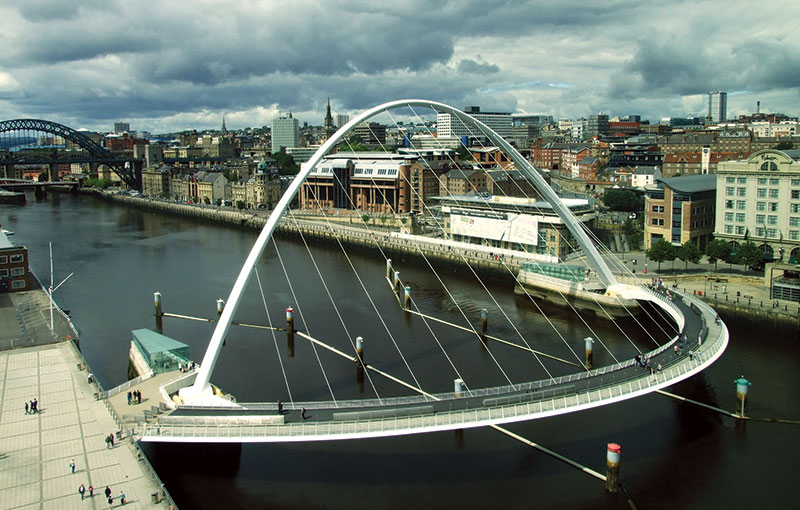Bridges are structures that connect two land masses separated by valleys or rivers, but they serve a greater purpose as they bridge the gap between different places, cultures, and societies. Discover how civil engineers construct bridges that win out over the deepest valleys and turbulent waters.
Millau Viaduct in France, a concrete structure supported by cables 270 meters high above the road level is a pinnacle of civil engineering achievement. It crosses over the valley of the River Tarn, and its overall length is 2460 meters. Across the globe, civil engineers have constructed bridges over such valleys and rivers, enabling the public to commute from one place to another efficiently. What we finally see is a structure carrying hundreds of vehicles from one point to another; however, the real story of a bridge is not that simple. Constructing a structure over rivers and valleys requires a lot of money, expertise, and patience. In this guide to bridge design and construction, we will get to know about the different aspects of bridge construction through many linked articles. Today, the study and advancement of bridge construction and design technology has diversified like never before, and we will discuss everything you should know about construction of bridges in this guide.

The Planning and Design Phase
First we plan and then we design and then we start with the construction of a bridge. However, the planning needs to be fail-safe because unless we know what to construct, how to construct, where to construct, we would not be able to erect a safe structure. Planning becomes extremely important when we have to deal with vehicles running at altitudes as high as 300 meters above ground level. Planning includes analysis of topography of the site, studying soil features, effect on wetlands, and surroundings.
Once planning is compete, the focus shifts to which type of bridge to construct. Depending upon the outcome of planning studies, we arrive at a decision regarding the type of bridge to construct. A beam bridge is the simplest type of bridge whereas a truss bridge is reliable and economical at the same time. Different types of bridges are suitable for different types of climatic conditions. The following topics will guide you through much of the terminology and theory of bridge types and their construction methods.
Seismic Retrofit, Earthquake Resistant Techniques, and More…
Bridge construction means taking care of various factors like soil liquefaction, earthquake sensitivity of the region, and working with different construction materials. Nowadays bridges are made earthquake resistant to minimize damage. Seismic retrofitting and base isolation techniques are modern age technologies that can effectively help in reducing the aftereffects of earthquakes. In this section we have articles that provide an insight into the importance of earthquake resistant design of bridges, methods and techniques to repair the damage, design parameters in the seismic zones, and much more.
Studying bridge failures is equally important because failure studies enable us to work on previous construction and execution mistakes. Bridges might fail because of human error or natural calamity, and analyzing failures helps a great deal to construct a better and safer structure in the future (because we can always learn from our mistakes). Here we have three very infamous engineering disasters that not only resulted in proprietarily damage, but also caused loss of human life.

Civil Engineering Wonders – The Best Bridges around Us
The Brooklyn Bridge was once considered the eighth wonder of the world; it is still called one of the greatest civil engineering feats of the 19th Century. America is proud of the Golden Gate Bridge in San Francisco, and it stands witness to the political and social changes the country has seen in the last century. Here we have articles mentioning the greatest civil engineering feats of the modern times, which include the Panama Canal bridges, the 126 meter high Bandra Worli Sea Link (BWSL) in India, and the tallest cable bridge in France.
These are some of the great bridges around us that have benefited the masses and made the whole engineering fraternity proud as well. Are there any other topics concerning bridge design and construction that you would like to see covered at Bright Hub? If so, please include your suggestions in the comments section below. Please note that comments are moderated and take some time to appear.


